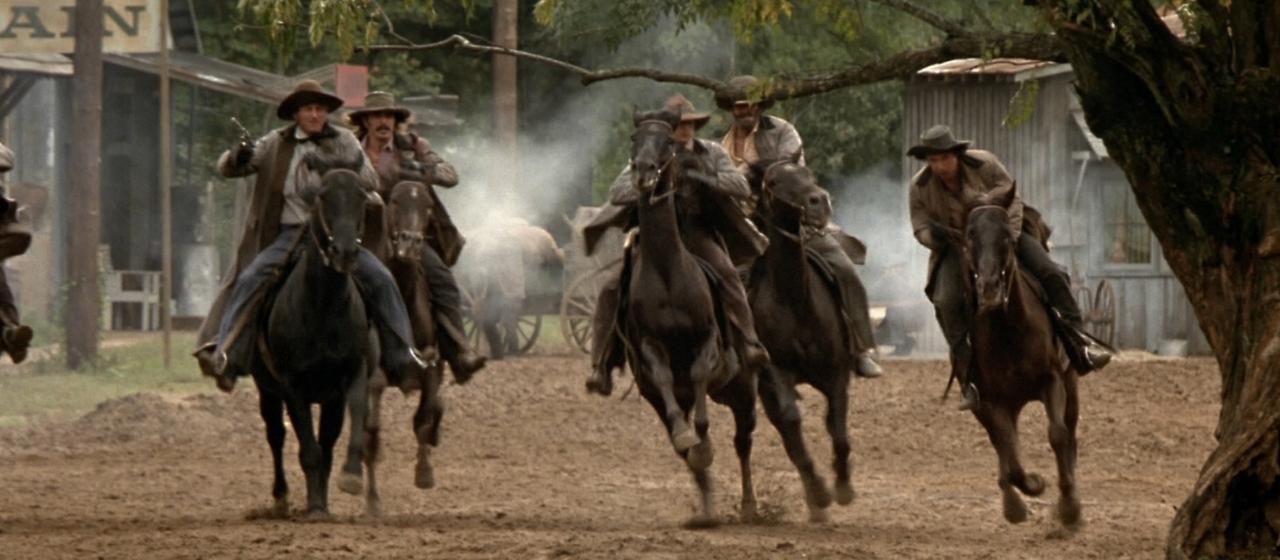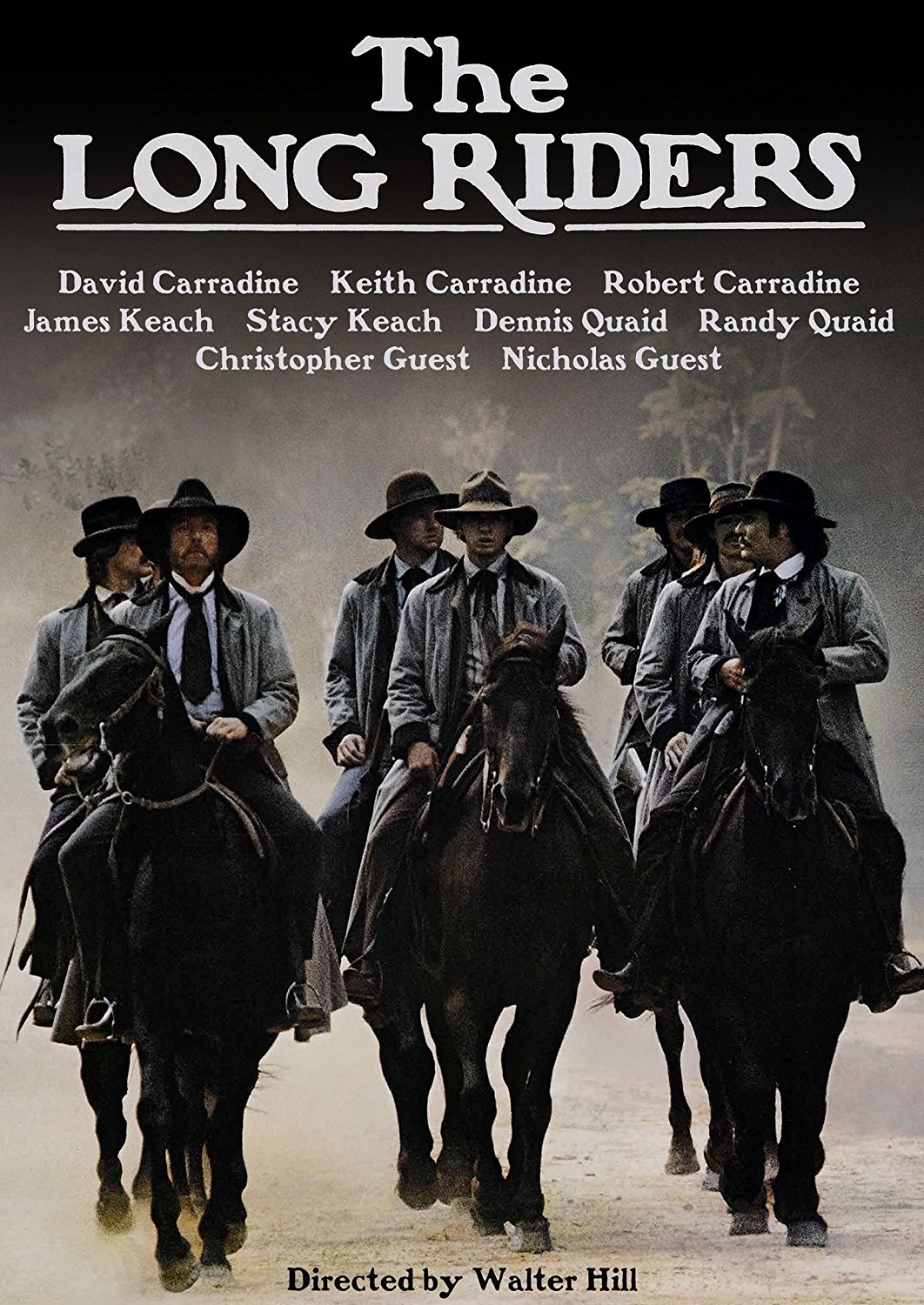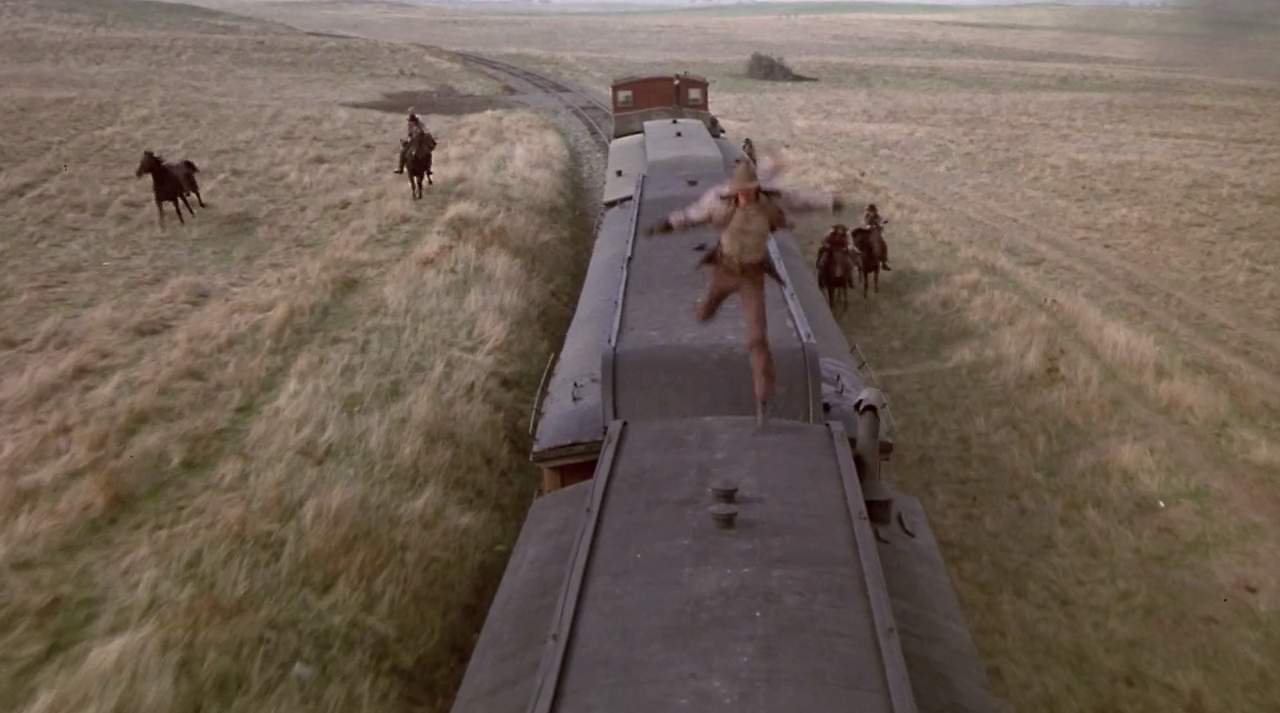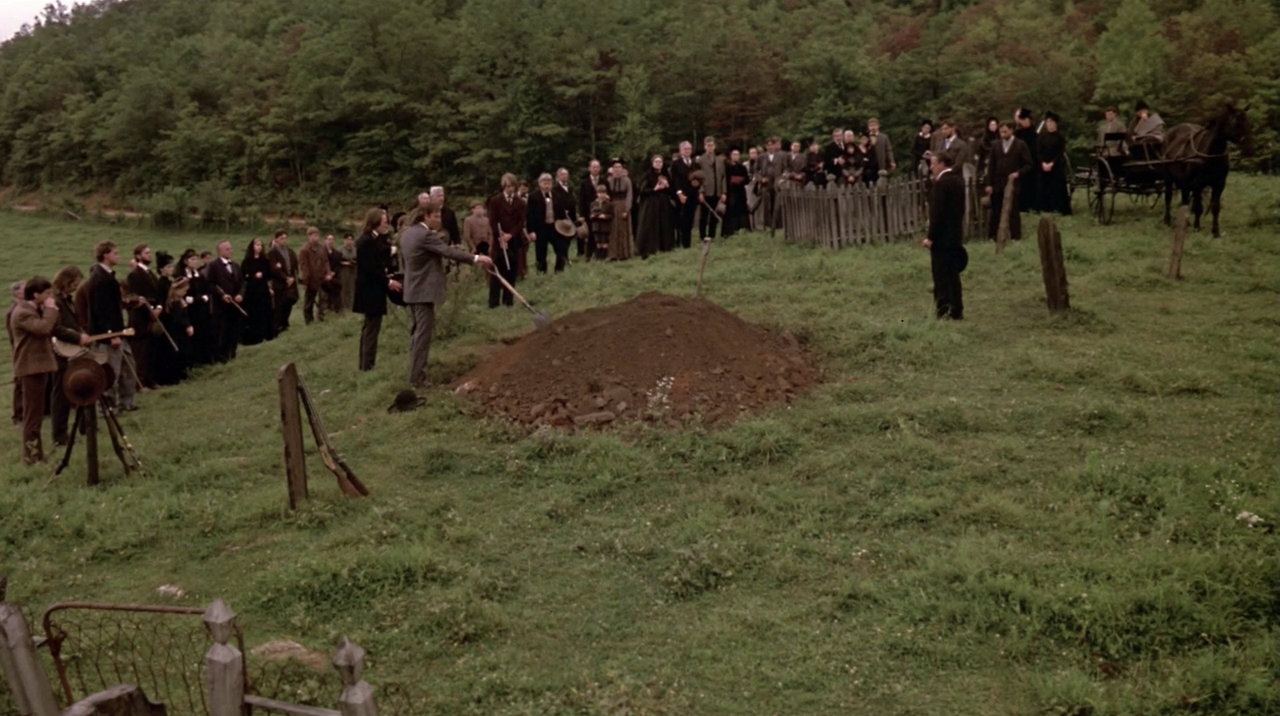

“Well, you keep losin’, at this rate, we’re gonna have to go out and rob another train and scare some more innocent folk half to death.”
The thing that must be kept in mind when watching Walter Hill’s The Long Riders is that it assumes you already know the story of the James-Younger Gang. That’s not a bad bet considering that the iconic Old West figures have been depicted in several dozen films over the years, not to mention all of the books and ballads and stage productions that they inspired. This assumed familiarity allows Hill to divert his focus away from conventional plotting; to craft a narratively sparse story that moves from expositional interludes to epic set pieces without providing the connecting tissue that would typically link them together.
But what somber interludes and explosive set pieces they are, undergirded by the background folklore and brought to life by expansive sets, authentic mise en scène, a beautiful period soundtrack from Ry Cooder interspersed with bountiful diegetic music, attractive cinematography from Ric Waite, and Hill’s Peckinpah-derived style of shooting action sequences. In this way, the mournful story is condensed to a palatable one hundred minutes but generates the momentum of a rambling epic. On net, then, Hill’s decision to present his tale as a series of vignettes pays off handsomely, resulting in a mesmerizing piece of myth-making Americana that is by turns bucolic, elegiac, and harrowing.
Regarding the noteworthy exploits of the outlaw gang’s short-lived career, The Long Riders is less a biography than a potted history that touches upon only a few of the most riveting peaks. It begins with a bank robbery gone awry, then moves onto a train heist, an ongoing game of cat-and-mouse with a Pinkerton detective (James Whitmore Jr.), revenge killings when the law mistakenly takes the innocent lives of relatives, the fateful attempt to rob the bank in Northfield Minnesota, and finally the Fords’ betrayal of Jesse James.
Hill’s action direction is impeccable across the board. The train heist is beautifully orchestrated and composed, featuring a breathtaking shot from atop the train where one of the cowboys runs toward the camera, bounding between cars, while the others flank the carriages on horseback. Later, a bloody shootout at one of the gang’s hideouts finds the outlaws fleeing down a steep gorge under a hail of gunfire, the storage barn they’d been cooped up in chopped into smithereens by the ceaseless barrage. When the gang tracks down the officers who killed their relatives in the town square, Hill cleverly renders their horseback approach entirely silent, even though their targets’ footsteps can be heard.

The capstone is the brutal bloodletting in Minnesota, where the botched robbery turns into a hideous massacre. Barbarous and poetic, the ten-minute sequence unfolds with a brilliant combination of precision editing and slow motion action shots as the James-Younger Gang is shredded by a ragtag band of officers and vigilant citizens. Perhaps the most inspired creative choice here is to slow down the sound, resulting in hypnotic shots where the bullets can be heard whizzing toward their targets seconds before they make impact, and the neighs of the mounts are grotesquely elongated. Sometimes the sound and the image move in sync, other times they do not, enhancing the chaotic texture of the sequence. Downed men are dragged behind their horses, others cartwheel through the air when they are struck, and one has a bullet pass through both of his cheeks. A stunning slow motion sequence finds the whole gang taking a wild shortcut through the plate glass windows of a general store.
Unexpectedly, though, for a film with such exceptional action, The Long Riders is equally interested in the personalities and social lives of its ensemble cast. The unique gimmick here is that the four sets of brothers depicted in the film are played by real-life siblings. Stacy and James Keach (who also had a hand in writing the script) inhabit the roles of Frank and Jesse James; David, Keith and Robert Carradine are the Youngers; Dennis and Randy Quiad, the Millers; and Christopher and Nicholas Guest, the Fords. But is this really a gimmick? While initially scoffed at, the natural familiarity between the cast members—many of whom were friendly prior to making the film, brothers or not—lends an aura of authenticity to the picture; not only to the depictions of home life, but also to the tense sequences where the gang’s no-man-left-behind ethos is tested. And it’s not as if any of the actors are less than professional, even if it is a little funny seeing Christopher Guest in a dramatic role considering his ensuing career in comedy.

We witness the men push their sweetheart’s on tree swings, play cards, listen to musical performances, attend the funerals of their kinfolk, visit whorehouses, roughhouse in bars, reflect upon the possibility of easing into a respectable life, and so on and so forth. The camaraderie between the actors allows entire conversations to be condensed into an exchanged glance and laconic mutterings, suggesting rich personal histories and clearing space for languid moments of reflective conversation that expand the film’s scope and provide a counterpoint to its action. But even in these quieter scenes, there’s an overriding sense of foreboding, as if they know that fate is pulling them toward an early demise. Indeed, while the narrative is splotchy and undercut by the atypical structure of its story, it is tonally superlative, its lyrical and joyous passages always balanced with the cold cock of a bystander or the death of an innocent cousin. This overpowering nihilism is felt in Jesse’s half-hearted proposal to Zee (Savannah Smith Boucher), in Cole’s warped relationship with witty prostitute Bell Starr (Pamela Reed), and, by contrast, in the ostracized Ed Miller’s earnest romantic pursuit of Beth (Amy Stryker).
Consider the sequence where the gang rides on a train to their fateful bank robbery. Robert and Keith Carradine provide atmosphere with a musical performance, one playing a jaw harp, the other smoking and singing along. Meanwhile, David Carradine tells Stacy Keach that he’s going to write a book about his exploits as “a gentleman and a lover.” Keach says he wants a free copy when he’s done with it. “You gotta pay, Frank,” he replies, his tone suggesting that his comment applies to their outlaw way of life as much as the request of a free book. “You gotta pay.”
In this manner, Hill crafts a compact epic that both reveres and revises its genre, laying out and luxuriating in its tropes while reconstructing one of its folk heroes in a way that gives both history and legend their due, neither glamorizing nor judging its subject.